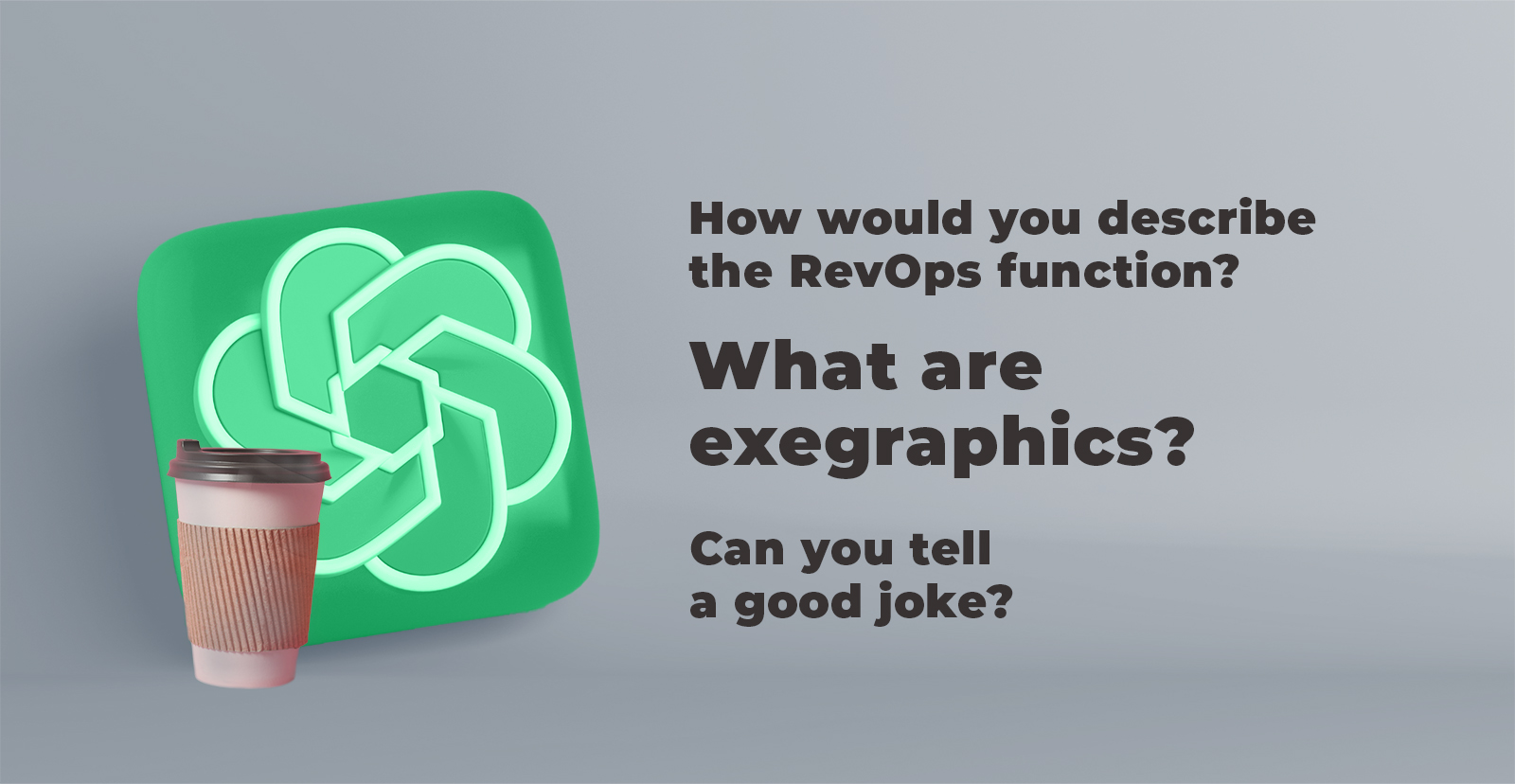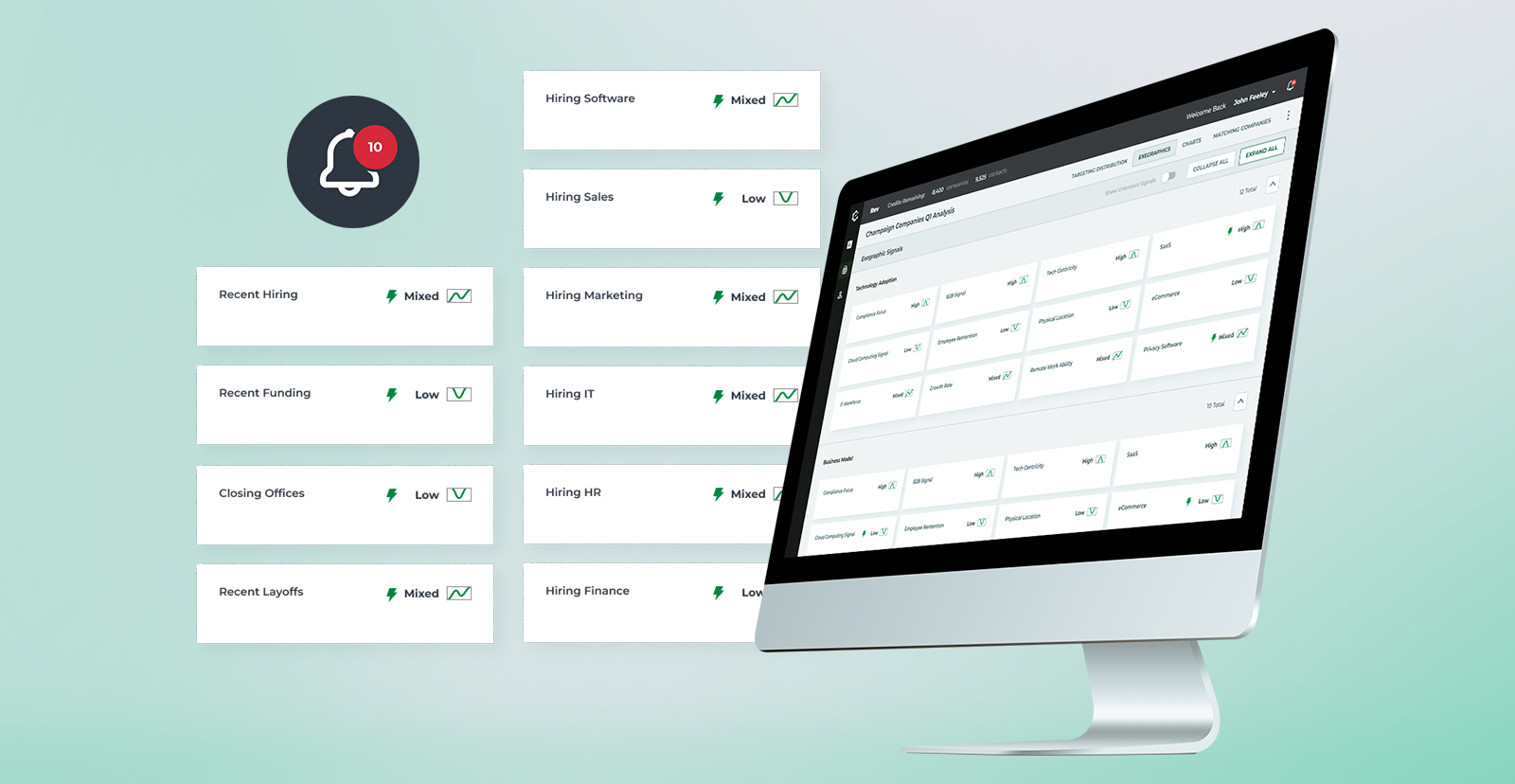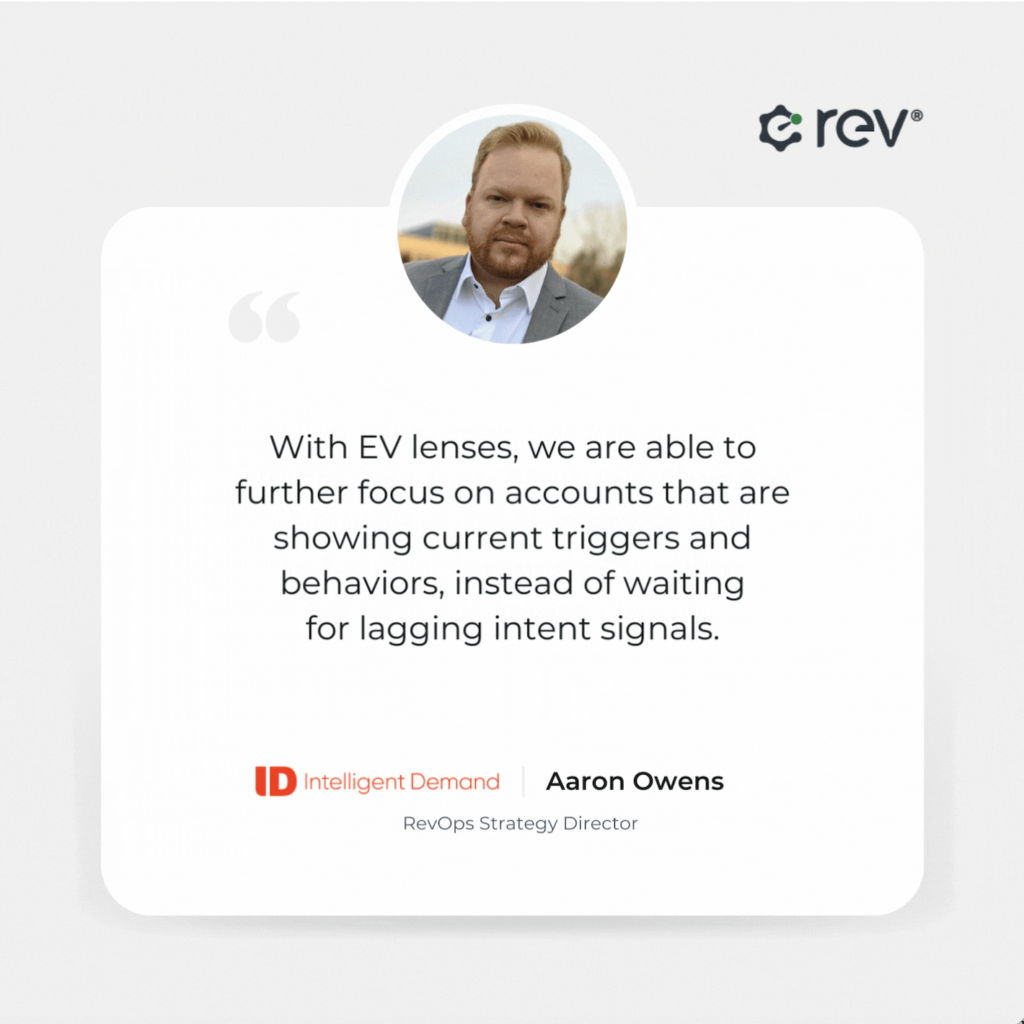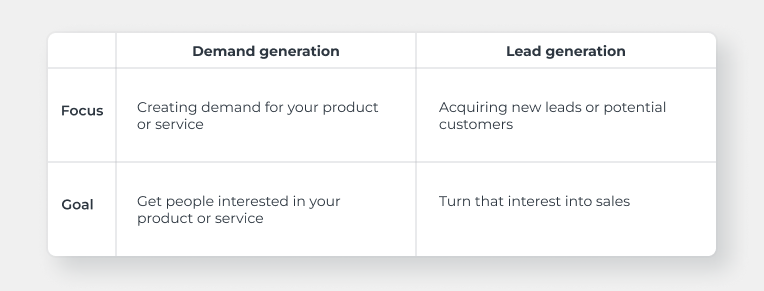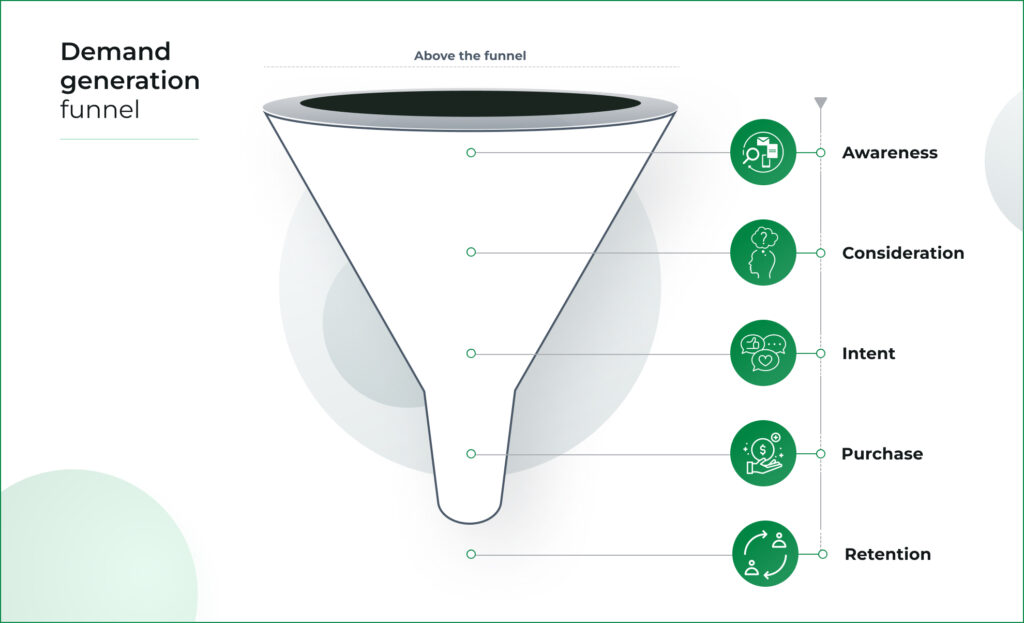You’re not alone. When most B2B companies set out to find new customers and increase sales, they rely on an outdated ideal customer profile, use one-size-fits-all marketing tactics and hope for the best.
But what if there was a better way? What if you could focus your marketing efforts and target potential customers with the highest likelihood of buying from you?
Well, you’d have found a more predictable way to increase sales without wasting time and resources on unqualified leads. And that’s what we’re going to show you how to do in this blog post!
Whether you’re a RevOps leader, marketing professional or sales development leader, you’ll walk away with actionable tips on how to find new customers and increase sales. For each tip, we also share an additional resource that dives deeper into the specific tactic to help you learn how to implement it in your business.
But, before we can get to those tactics, we want to help you correct that first mistake. Because, unfortunately, it’s one that many companies make without even realizing it…
How to fix the biggest mistake companies make when attempting to find new customers and increase sales
Most companies make the mistake of trying to find new customers without understanding who their ideal customer is. This misguided approach leads them to cast a wide net and waste valuable time and resources chasing after prospects who are not a good fit for their business.
How do you avoid this? By creating a dynamic ideal customer profile (ICP) that doesn’t just look at demographics or firmographics but also data that shows the behaviors companies display when they are ready to buy. Here’s a three-step strategy to help you do that:
Step 1 – Study the behaviors of your best customers
Most companies also don’t take the time to research and understand the behavior patterns of their best customers. But by studying your current successful clients, you can identify potential new targets with similar characteristics and behaviors.
What type of characteristics and behaviors should you look for? Anything that influences how your best customers make buying decisions.
For example, do your best customers usually come to you when they’ve restructured their team or hired a new CEO? How big are the teams that end up using your product? Are those teams made up of early adopters?
At Rev, we refer to this type of information as a company’s exegraphics—data points that give insight into how the company executes its mission. We’ve found that this type of data is much more reliable than demographic or firmographic data when predicting how likely a business will buy a B2B solution or software.
How do you find exegraphic data? You can find this information by doing things like talking to your current clients, researching their website and social media presence, and reading their job descriptions to identify what they look for in employees. The only problem is that this type of research can be tedious and time-consuming, making it nearly impossible to scale quickly enough to be worth the effort.
To speed things up, you can use Rev’s Sales Development Platform, which uses AI to find and analyze the exegraphics of your best customers. This technology allows you to quickly refine your ideal customer profile so you can increase your sales pipeline with high-fit target accounts.
Step 2 – Refine your ideal customer profile
Once you’ve identified the characteristics of your best customers, the next step is to use that information to update your ideal customer profile. Ideally, you’ll go from having an ICP that only tells you things like company size, annual revenue and geographic location to something much more comprehensive and reflective of how the ideal company operates.
For example, once you start using exegraphic data, the change in your ICP might look like this:
Old ICP using demographics and firmographics
- Fortune 100
- Mid- to large-size manufacturing companies in the Midwest with annual revenues between $20-50 million
- Employee base of 70k-100k
New ICP using exegraphics
- Companies that have recently expanded their accounting teams
- Decision makers who prioritize efficiency and ROI
- Prior experience using financial software like Quickbooks
- Strong focus on data-driven decision making
Another critical component of refining your ideal customer profile is regularly updating it as your industry and the behaviors of your best customers evolve.
Step 3 – Tailor your messaging to appeal to your ideal customer profile
Once you understand your ideal customer’s exegraphics, use that information to tailor your communication with potential clients. This can help attract their attention and make it clear how your product or service can benefit them specifically.
Going back to the example above, perhaps you’d go from positioning your product as the perfect solution for mid-size manufacturing companies to communicating how your product helps companies with large data-driven accounting teams that need to prioritize efficiency and ROI.
See how that second type of messaging might better capture the attention of your ideal customer and convince them that your product is worth learning more about? This is the power of having a more comprehensive understanding of your ideal customer. It’s also the secret to getting the most out of the tactics below!
15 B2B marketing tactics to find new customers and increase sales
Now that you’ve refined your ICP and messaging, let’s dive into some specific tactics for generating leads and increasing sales from new customers.
#1 Invest in inbound marketing
Inbound marketing is one of those strategies that may take time to see results, but it’s worth it in the long run. Research shows that leads generated from inbound marketing cost 61% less on average than leads from outbound marketing.
But what exactly is inbound marketing? Good question! Inbound marketing is about creating valuable content and experiences tailored to your ideal customer. This could be anything from blog articles, downloadable guides, webinars or any helpful piece of content or tool.
By providing potential customers with value, you’ll position yourself as a thought leader in your industry. In turn, potential customers will become more likely to trust you as a solution to their problems.
Resource to help you learn more about this tactic:
24 inbound marketing strategies you need to start using today
#2 Guest post on industry blogs
No matter your industry, there are likely websites and blogs that cater to your target audience. Guest posting, or writing a blog post for another website in exchange for a link back to your site, can introduce you to a whole new group of potential customers.
It’s important to do your research and find guest posting opportunities on reputable sites with high domain authority. Once you’ve found your target sites, ensure your pitch offers value to the site’s readers and highlights how your expertise can benefit their audience. If you’re unsure how to find guest posting opportunities, check out the helpful guide below from Backlinko!
Resource to help you learn more about this tactic:
Guest blogging: The definitive guide
#3 Cold outreach high-fit targets
Many sales teams still rely on cold calling and emailing to try and get new customers. But how successful is this tactic really? Depends on how you choose which account to contact.
Instead of blindly reaching out to any target, prioritize teh targets that have already shown interest in your product or service—or that are a “fit” for your product/service and show signs of high-propensity to engage. If you use Rev to find target accounts, each will have a “Rev Score”—a number from 0-5—that reflects which businesses show the most signs of being ready to buy.
Another way to warm up cold calls and emails is through referrals from your current customer base. Customer referrals not only improve your chances of success but also strengthen relationships with your existing customers.
Resource to help you learn more about this tactic:
Why your cold outreach sucks (and what to do about it)
#4 Incentivize referrals from current customers
Speaking of referrals, remember to ask for them and, if possible, offer an incentive. This not only brings in more potential sales but also shows your existing customers how much you value their loyalty. Plus, word-of-mouth referrals tend to carry a lot of weight in the decision-making process for many buyers.
Some valuable incentives for B2B buyers include offering a discount on their next purchase or a free upgrade to their current product or service. Again, make sure to tailor your offering based on what would be most valuable to them. For example, a SaaS company might offer a complimentary month of service for every successful referral.
Resource to help you learn more about this tactic:
The 7 best incentives for B2B referral programs
#5 Generate leads on LinkedIn
If you’re not already using LinkedIn to generate leads, you’re missing out! LinkedIn is a powerhouse for B2B lead generation and networking, especially in industries like tech, finance and consulting.
To start, ensure your company’s executives have profiles that showcase their expertise, use targeted keywords in their headlines and summaries, join relevant groups, and actively engage with others on the platform by commenting on their posts and messaging potential leads.
Posting content on LinkedIn can also be a great way to attract new customers, particularly when the content showcases expertise and thought leadership relevant to your industry. Ideally, this type of content would come from the personal profiles of executives or senior-level employees. But it can also come from your company profile as well.
Resource to help you learn more about this tactic:
How to generate leads on LinkedIn, according to LinkedIn’s VP of Marketing
#6 Join or create Facebook groups
Depending on what you offer, Facebook groups can be a great place to network with potential customers. To find groups relevant to your business, search for industry keywords or related interests on Facebook and request to join. Once you’re a member, engage with the community by sharing valuable content, starting discussions and reaching out directly to members who could benefit from your offering.
If you find that the existing groups fail to meet your needs, consider starting your own group. This strategy would allow you to handpick members and create a space specifically for networking and finding new customers.
Resource to help you learn more about this tactic:
10 ways a Facebook Group can increase lead generation
#7 Participate in Reddit groups
When used strategically, Reddit can be a gold mine for finding and engaging with potential customers. The Q&A platform makes it easy to find and engage with potential customers as users openly ask questions to find solutions to their problems, air their grievances about failed solutions and provide advice to fellow Redditors.
For lead generation, you can start by joining Subreddits related to your industry or offering. Then, you’ll want to become an active member of the community and build authority on the topic by providing valuable insights and solutions.
Once you’re comfortable with the platform, consider hosting an AMA (ask me anything) to introduce yourself and your business to the Subreddit members and answer any questions they may have about the problem your business solves or your offering. Doing so not only positions you as a thought leader but also allows potential customers to get to know you and your business on a more personal level.
Resource to help you learn more about this tactic:
Complete guide to using Reddit marketing for B2B SaaS businesses
#8 Target your ideal customers with paid ads
Consumers get bombarded with a constant stream of advertising. So, sometimes, traditional paid advertising can get lost in the noise. But, done strategically and with targeting, paid advertising can be highly effective in finding new customers.
When creating your ads, focus on highlighting the specific pain points your product or service solves and how it can provide value to the consumer. One way to approach this is by basing the messaging of your targeted ads on your ideal customer profile and then targeting those specific segments. This strategy ensures that your ad is being seen by the right people, increasing the likelihood of conversion.
Resource to help you learn more about this tactic:
7 ways to build a better paid advertising strategy
#9 Improve your website’s search engine optimization (SEO)
If your ideal customer can’t find your website, you could lose them as a potential new customer. And that’s because showing up on the first page of search engine results is an essential component of any lead generation or customer acquisition strategy.
According to Google, there are over 200 factors that go into SEO and how well a website ranks in search engine results. But you don’t need to address everything at once to see results. To start, make sure your website uses relevant keywords, is mobile-friendly, loads quickly and has high-quality content that appeals to your ideal customer.
Resource to help you learn more about this tactic:
6 SEO tactics for maximum customer acquisition
#10 Incentivize new sign-ups
Consumers occasionally need a little push to try something new, especially when it comes to signing up for a new product or service. That’s why offering incentives, such as a discount or free trial, can be a great way to attract new customers. Just make sure the incentive aligns with your target audience and their needs.
Resource to help you learn more about this tactic:
5 tried-and-true ways to drive more sign-ups to your SaaS website
#11 Win back lost customers
Sometimes customers stop using your product or service, whether it’s due to a better offer from a competitor or just simply forgetting about you altogether. Don’t give up on them though! Reach out to these lost customers with personalized messaging and offers to win them back.
For example, you might create an email campaign that offers a discount to customers who haven’t purchased from you in the past six months or offer a free trial for a new feature. You’d be surprised how many customers are willing to come back if you make an effort to reach out to them.
Resource to help you learn more about this tactic:
Winning back lost customers: 5 tips for success
#12 Pitch your business for media coverage
Media coverage can bring in new customers and increase sales by expanding your reach and establishing credibility. So, why not pitch your business to podcasts, radio shows and other media outlets as a guest expert?
If you’re not where to start, look into HARO (Help a Reporter Out), where journalists and reporters constantly look for expert sources to include in their stories. Another option would be to start a company podcast that covers industry news and topics and invites guests to share their ideas.
Resource to help you learn more about this tactic:
How to get media coverage for your business in 2022 (w/ expert tips)
#13 Attend and network at industry events
While it may be a high investment in terms of cost and time, the networking opportunities at industry events and conferences are unparalleled. At these events, you can connect with other professionals who may become your next clients or be able to refer business to you.
Local events can also provide valuable networking opportunities. For example, a local Meetup group that aligns with your target audience can also be an excellent opportunity to make connections that lead to more business.
Resource to help you learn more about this tactic:
What is B2B Event marketing and why is it important?
#14 Establish cross-industry partnerships and collaborations
Sometimes, businesses in a different industry may have a similar target audience to yours. Consider how you can partner with a non-competitive, complementary business to co-market and co-sell to each other’s customer bases.
For example, if you sell HR software, consider partnering with a payroll company to host an event for HR professionals. This type of partnership allows you to reach new potential clients and adds value for existing customers.
Resource to help you learn more about this tactic:
The ultimate guide to B2B partner marketing in 2022
#15 Set up an affiliate program
Never underestimate the power of a word-of-mouth referral. Affiliate programs incentivize others to refer your product or service, giving them a commission for every successful sale.
These programs can also be a great way to expand into new market segments and drive sales from a trusted source, as they can help you tap into networks your business may not have access to. Affiliate programs can also increase customer loyalty by incentivizing existing customers to promote your business to their network.
Resource to help you learn more about this tactic:
How to start a B2B affiliate marketing program: 10 strategies you can’t afford to miss
5 tips to increase sales from your existing customers
It would be a mistake to only focus on acquiring new customers to increase sales. Research shows it costs five times more to acquire a new customer than to retain an existing customer. Existing customers are also 50% more likely to try new products and spend 31% more than new customers.
Here are five tactics you can use:
#1 Develop a customer loyalty program
Customer loyalty programs incentivize repeat purchases and encourage customers to spend more with your business. Loyalty programs also have the added benefit of collecting important customer data and providing valuable insights into your customers’ purchasing habits.
For example, you might learn that a particular group of customers always purchase your product during a certain time of year or after they receive a specific promotion. This type of data can help inform how you target and market to customers in the future.
Resource to help you learn more about this tactic:
B2B loyalty programs: A comprehensive guide (2022)
#2 Offer upsells and cross-sells
Upselling is offering a higher priced or upgraded version of a product the customer is already interested in while cross-selling is offering a related product or service. Both strategies can help increase the average transaction size and boost sales from current customers.
No one likes to get bombarded with sales pitches, so make sure you’re offering these additional products or services in a natural, non-pushy way. For example, if you’re a B2B software company, you can offer training or implementation services as a cross-sell. (And if you need help identifying which customers to cross-sell to, check out this article.)
Resource to help you learn more about this tactic:
Cross-selling and upselling: The ultimate guide
#3 Create product bundle deals
Bundles are also an excellent option for cross-selling related products or services. For example, a data storage company could offer storage hardware, installation services and data backup plans as a bundle package.
Creating these bundles not only allows you to increase the average transaction size but also provide additional value to your customer by offering a complete solution. Without any extra effort, customers can easily purchase all the products or services they need in one go.
Resource to help you learn more about this tactic:
Product bundling 101: Guide, strategies and examples
#4 Give personalized discounts and promotions
Personalized discounts and promotions show your customers that you value them as individual accounts and are willing to go the extra mile for their business. You can even personalize the deal using the information you learned while refining your ICP.
For example, let’s say you’re a SaaS company offering HR software solutions. You might consider offering a personalized discount to your customers with large teams that have used your product for over a year, as they could benefit greatly from upgrading to your premium package.
Resource to help you learn more about this tactic:
The best practices for B2B promotions & discounts
#5 Keep in touch with customers
It’s important to keep in touch with your current customers, even after they’ve made a purchase. You can do this through email marketing campaigns, personalized phone calls, thank you notes and maintaining an active presence on social media.
Why do this? Because consistent communication helps maintain your relationship with existing customers and keeps your brand top of mind for future purchases or referrals. Think about it. If customers regularly see your brand in their inbox or social media feeds, they’re more likely to recommend you to a colleague when the opportunity arises.
Resource to help you learn more about this tactic:
10 B2B email marketing tips that will increase your sales in 2022
Final thoughts
Don’t make the mistake most businesses make when attempting to find new customers and increase sales! Take time to truly understand your ideal customer and how to serve them effectively before diving into marketing and sales strategies.
For the most efficient way to do this, consider using Rev’s Sales Development Platform to take advantage of AI technology that finds the exegraphics that define the behaviors of the companies most likely to be interested in buying from your business.
Want to see how it works for yourself? Contact our team, and we’ll schedule your free ICP audit.

